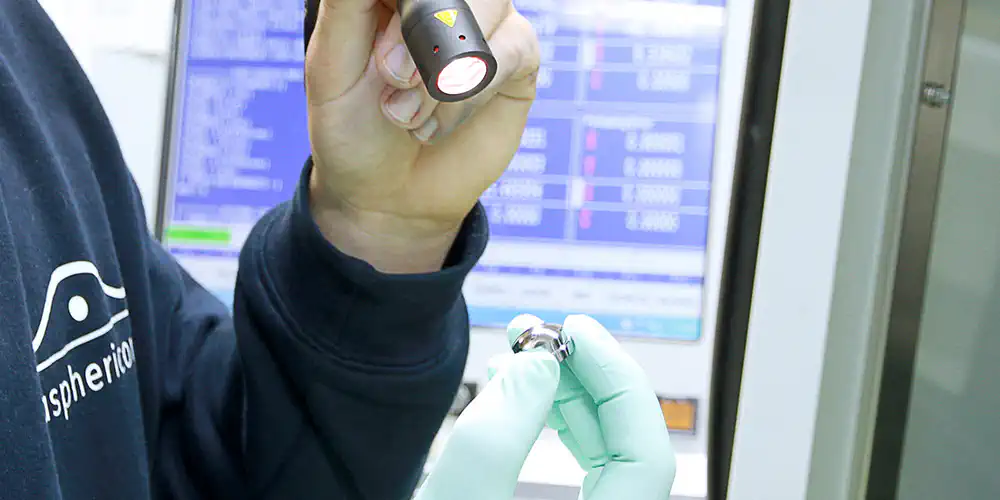
asphericon Ångström-Polishing
High-End-Finishing Correction Processes Part 3
Content
In the third section we will concentrate on asphericons Ångström-Polishing method. When every photon counts, scattered light is to be excluded or applications with high laser power are to be carried out, the asphericon Ångström-Polish allows roughness values of 5 Å (Rq measured on 1000x1000 µm measuring field, Rq according to ISO 10110) on optical surfaces. The process is linked to CNC machining. The optimized CNC process enables for the correction of short-frequency errors. Highest accuracy can be achieved through specially developed tools and technology. This allows to produce surfaces in an unprecedented form. The surface precision remains untouched.
The asphericon Ångström-Polishing Process
The high-precision Ångström-Polishing, based on CNC production, is made possible by a patented control software specially developed by asphericon. The polishing process is controlled fully automatically and thus enables unique roughness values of 5 Å. The Ångström- Polishing can be illustrated using any chosen optical surface. The surface of no optics is ideal, since long-frequency errors lead to deviations from the ideal surface shape (see Fig. 1). On closer inspection, a long-frequency error contains many short-frequency errors - so-called spatial frequencies (see Fig. 2). The Ångström-Polishing completely corrects the short frequency errors by combining the optimized CNC process with a unique software control (see Fig. 3). What remains are the long-frequency errors, which can be corrected to a minimum using asphericon technology. The Ångström-Polishing can be used for the processing of various elements in the optical range, e.g. for mounted satellite lenses or for optics of an ultra-short pulse laser.
Fig. 1: Ideal surface deviates from real surface, long-frequency errors present
Fig. 2 & 3 - Left: Zoom before Ångström-Polishing (short frequency errors, local frequencies) Right: Zoom after Ångström-Polishing (short frequency errors removed, local frequencies corrected
Advantages of Ångström-Polishing
The low and precise material removal of the patented Ångström-Polishing makes the process stand out from other high-end finishing processes with an unprecedented level of accuracy in the short wavelength range. In the measured area of 1000 x 1000 µm, roughness values under 5 Å can be achieved by reducing the roughness values.
The advantages of Ångström-Polishing at a glance:
| Roughness value: | 5 Å (Rq measured on 1000x1000 µm measuring field, Rq according to ISO 10110) |
| Special features: | Worldwide unique correction in short-wave length range |
| Minimal residual scattering on optical surfaces | |
| Broad scope | |
| Mass production: | Low to high quantities |
Application Examples
One advantage of the Ångström methodology is the wide range of applications for the most diverse optical elements that can be processed. The polishing of optical glasses (spheres and aspheres), crystals or e.g. IR materials is possible without problems and ensures an optimal utilization of the photons. The consistently flawless imaging properties of the processed elements make the High-End-Finishing process the ideal addition to the manufacturing process. High-precision surface tolerances and minimum surface roughness values are particularly important in the aerospace industry, especially in optics for satellites and satellite cameras. Also, in various measuring devices, such as atomic interferometry, high-precision optical components are required in order to achieve the best measurement results.


